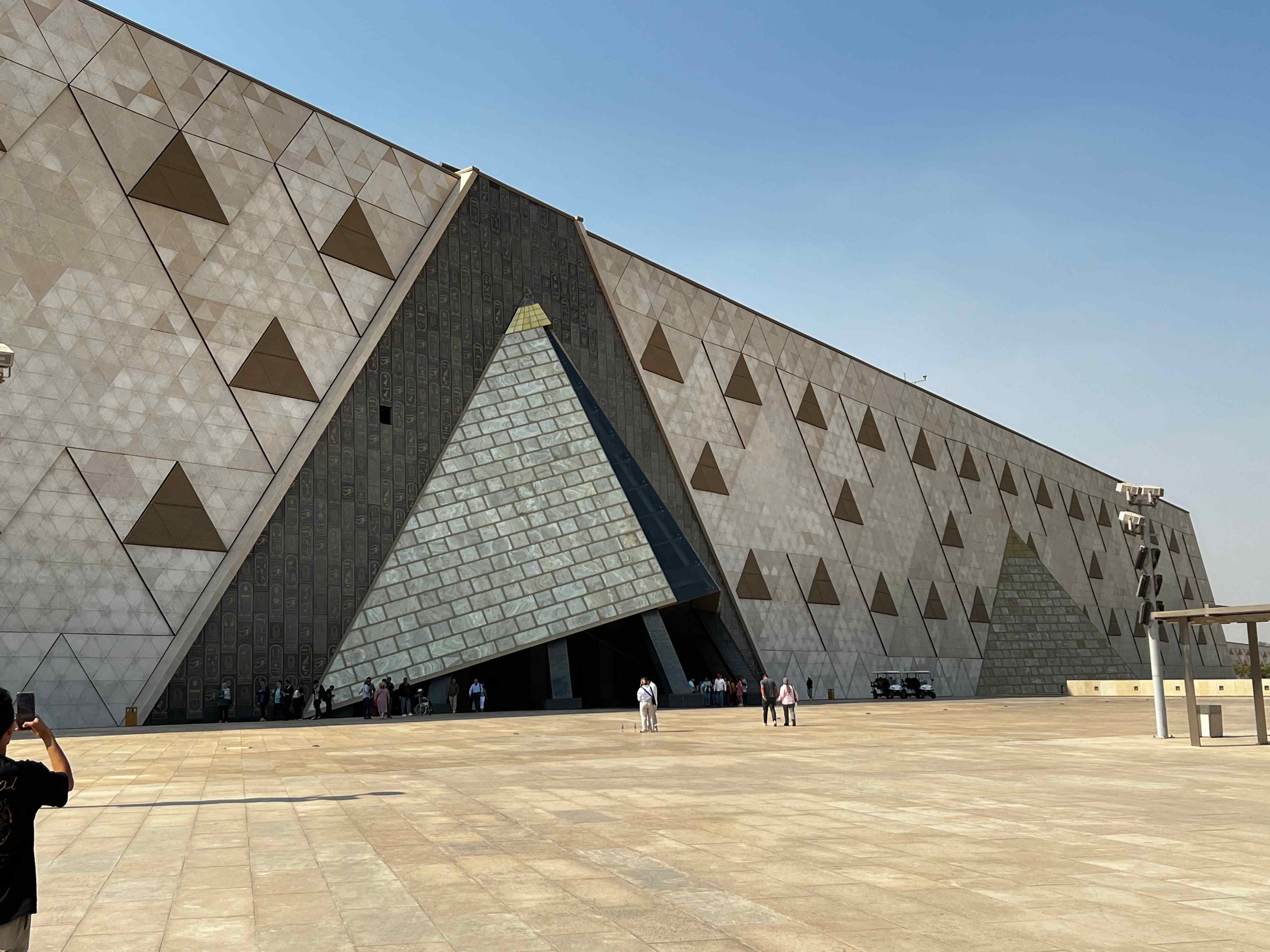
The True Story of Stunning Dahshur Red Pyramid in Egypt
Discover Crimson Majesty of the Dahshur's Stunning Red Pyramid
The Dahshur Red Pyramid rises majestically from Egypt’s desert sands, captivating visitors with its striking hue and precise design. As one of the world's oldest true pyramids, it marks a defining moment in ancient Egyptian engineering.
This extraordinary monument was the first successfully constructed smooth-sided pyramid, showcasing a perfect geometric form that continues to amaze historians and travelers alike. Its groundbreaking architectural techniques and historical significance reveal the origins of its name, the mysteries hidden within its chambers, and its transformative role in pyramid construction.
The Story Behind the Red Pyramid
Situated in Dahshur’s ancient necropolis, the Red Pyramid stands as a testament to Egypt’s architectural brilliance. Ranking as the third-largest pyramid in the country after the Great Pyramids of Khufu and Khafre at Giza, it embodies both ambition and innovation.
What is the Red Pyramid in Ancient Egypt?
The pyramid derives its name from its exposed reddish limestone core. Originally, it was covered in dazzling white Tura limestone, sourced from quarries south of modern Cairo. Over time, medieval builders repurposed much of this outer casing, revealing the rust-colored stone beneath.
Why is the Red Pyramid Famous?
Renowned for its sophisticated design, the Red Pyramid boasts an intricate internal structure. A narrow northern entrance leads to a sloping passageway, guiding visitors into a series of interconnected chambers. Each chamber, with its distinctive corbelled roof resembling an inverted staircase, showcases the advanced construction techniques of ancient Egyptian builders.
The pyramid’s deepest chamber is believed to have served as the burial site of its creator, reflecting a masterful blend of architectural precision and sacred tradition.
What Pharaoh was the Red Pyramid Built For?
Commissioned by Pharaoh Sneferu, this pyramid was the culmination of his ambitious construction projects, following earlier attempts with the Bent and Meidum Pyramids. Construction began around the 13th year of Sneferu’s reign and was completed in just a decade, a remarkable feat of ancient engineering.
The Red Pyramid’s design represents a major leap forward in pyramid construction, with its smooth, angled sides setting the standard for future monuments.
Inside the Ancient Wonder
Visitors entering the Red Pyramid embark on a journey through its well-preserved chambers, experiencing firsthand the ingenuity of ancient Egyptian craftsmanship.
-
The Grand Entrance: A modest northern entrance opens into a descending passageway, measuring just one meter in height and width. This narrow corridor leads deeper into the pyramid’s core, offering a close connection to its ancient origins.
-
Three Remarkable Chambers: The first chamber features a towering corbelled ceiling, an engineering marvel that distributes weight evenly. A passageway connects this to a second chamber at the pyramid’s heart, leading to the most sacred space, an additional chamber believed to be the burial site.
-
Preserved Architectural Genius: The corbelled ceilings and precisely arranged passageways stand as enduring proof of ancient Egyptian builders’ unparalleled expertise.
The Red Pyramid once gleamed under the Egyptian sun, clad in smooth, white limestone. However, the removal of this outer casing during medieval times exposed its reddish interior, giving the structure its current appearance.
Despite this transformation, the pyramid’s carefully planned design remains evident in its symmetrical proportions and innovative internal layout.
Engineering Marvel of Ancient Egypt
The Red Pyramid is a masterpiece of construction, marking a crucial shift in pyramid-building techniques. With a height of 104 meters (341 feet) and a base spanning 220 meters (722 feet), it follows a precise 43-degree angle, an architectural triumph achieved over 4,500 years ago.
-
Construction Timeline: Built between 2590 and 2580 BCE, the project showcased exceptional organization and efficiency, with completion in just 10–12 years.
-
Architectural Precision: The smooth-sided design, strategic chamber placement, and advanced corbelled roofing techniques highlight the sophistication of Sneferu’s builders.
-
Preservation and Legacy: Unlike many ancient structures, the Red Pyramid remains remarkably intact, with its internal chambers retaining their original form.
Why is the Red Pyramid Red?
The Architectural Legacy of the Red Pyramid
The Red Pyramid’s distinctive reddish hue tells a compelling story of architectural evolution. When first completed, this remarkable structure looked vastly different from what we see today. Its exterior was originally covered in pristine white limestone sourced from Tura, south of modern-day Cairo, giving it a smooth and radiant appearance.
The Color Transformation
Over the centuries, natural and human influences transformed the pyramid’s appearance. Like many other Egyptian monuments, the Red Pyramid was once encased in high-quality white limestone. However, during medieval times, much of this protective layer was removed for use in other construction projects. This exposed the underlying core of reddish limestone blocks, giving the pyramid its striking color and the name it bears today.
A Milestone in Architectural Innovation
The Red Pyramid represents a turning point in ancient Egyptian construction, marking a significant leap in engineering sophistication. It is the first successful attempt at a smooth-sided pyramid, a departure from earlier stepped or bent structures. The precision of its geometric design and the complexity of its internal chambers showcase the mastery of ancient Egyptian builders.
Engineering Excellence
The construction of the Red Pyramid reflects a high level of mathematical and architectural expertise, demonstrated by:
-
Perfect geometric proportions ensuring structural stability
-
Smooth-sided exterior walls, a breakthrough in pyramid design
-
Strategic placement of internal chambers for functional and ritualistic purposes
-
Innovative corbelled roofing techniques, enhancing durability and load distribution
As one of the earliest true pyramids, the Red Pyramid set a new standard for future pyramid construction, influencing the design of the Great Pyramid of Giza and beyond. Its enduring presence stands as a testament to the ingenuity, ambition, and technical prowess of ancient Egyptian civilization.
Fascinating Facts About the Red Pyramid
The ancient necropolis of Dahshur continues to unveil remarkable discoveries, offering deeper insights into Egypt’s architectural and engineering achievements. Each year, archaeologists uncover new details that highlight the ingenuity behind this iconic structure.
Architectural Dimensions
The Red Pyramid stands as a testament to ancient Egyptian precision and innovation. Its key measurements include:
-
Height: 104 meters (341 feet)
-
Base length: 220 meters (722 feet) per side
-
Inclination angle: 43 degrees, maintained consistently across its frame
-
Total volume: Approximately 1.69 million cubic meters
These precise proportions reflect the advanced engineering skills of ancient builders, making the Red Pyramid one of the most significant milestones in pyramid construction.
Is There More Than One Red Pyramid in Egypt?
Unlike the many pyramids scattered across Egypt, the Red Pyramid of Dahshur stands alone as a distinct architectural masterpiece. It earned its name from the exposed core masonry visible today, a result of the removal of its original white limestone casing.
Historical Timeline
-
Construction began: Around 2590 BCE
-
Completion time: Estimated 10–12 years
-
Significance: Marked a pivotal advancement in pyramid construction
The efficient completion of this massive project highlights the exceptional organizational and engineering skills of ancient Egyptian builders.
Preservation Status
The Red Pyramid remains one of the best-preserved pyramids in Egypt. Its internal chambers have retained their original structure, while external changes over millennia have altered its appearance. The corbelled ceilings inside the chambers are particularly notable, still showcasing the remarkable craftsmanship of their builders.
Archaeological Significance
This pyramid set new standards in ancient Egyptian architecture, influencing all future pyramid constructions. The builders’ use of advanced mathematical principles ensured perfect symmetry and structural stability, an achievement that continues to impress modern archaeologists.
The Red Pyramid stands as a testament to ancient Egyptian ingenuity and remains one of history’s most groundbreaking architectural achievements. This magnificent structure revolutionized pyramid construction, setting new standards that influenced all future Egyptian pyramids.
Originally adorned with gleaming white limestone, the pyramid has transformed over time, now displaying its signature reddish hue. Despite centuries of change, it remains remarkably well-preserved, allowing modern visitors to witness its architectural brilliance firsthand. The ancient builders showcased their mastery through meticulously designed internal chambers, featuring intricate corbelled ceilings and precisely aligned passageways.
The Red Pyramid is the crowning achievement of King Sneferu’s relentless pursuit of architectural perfection. His earlier attempts, the Bent Pyramid and the Meidum Pyramid, paved the way for this triumph, reflecting the advanced mathematical and engineering capabilities of ancient Egyptian civilization. Standing strong after more than 4,500 years, the pyramid continues to offer a window into the sophisticated construction techniques that shaped history.
Related Articles

Hidden Egypt Sightseeing
Once Egypt is mentioned as a fantastic travel destination, we think about Pyramids, Egyptian Museum and Bazaar Khan El Khalili. However, there are many more places to visit. Egypt never ceases to amaze anyone who visits. Egypt is home to the world’s greatest civilization and unique historical sites.Hidden gems in Egypt that you might not miss during your Egypt Travel Package.

The Grand Egyptian Museum
Imagine yourself walking amongst the most important artifacts of the Pharaonic era at the Grand Egyptian Museum. As you wander through its vast halls, you'll be transported back in time, surrounded by treasures that have witnessed the rise of civilizations.

Top Mysteries Facts about the great Pyramids of Giza
The Great Pyramid of Giza stands as humanity’s most mysterious architectural triumph.
